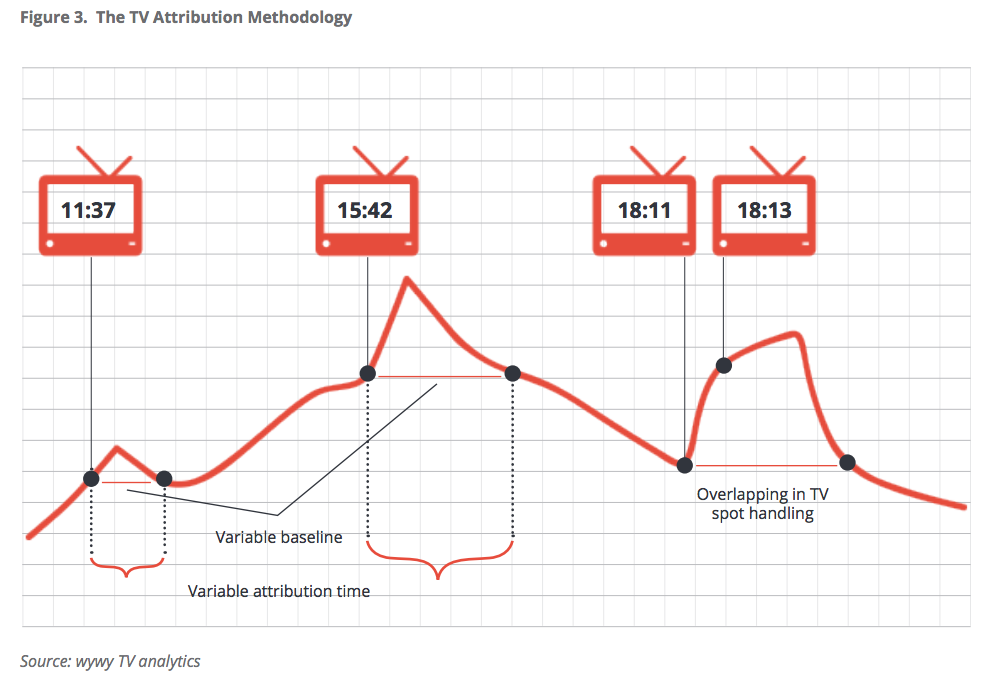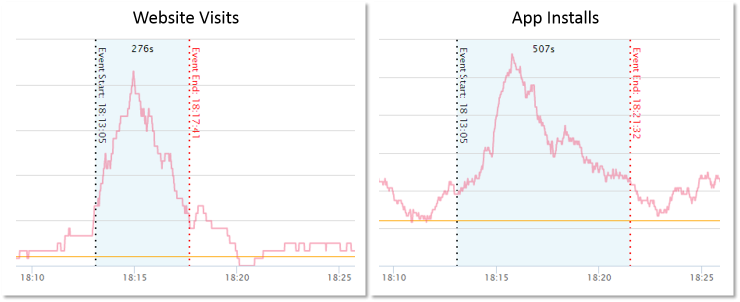Top 3 Videos on Mobile Growth #6: March 2017
Mobile App Growth
April 18, 2017
This is the sixth post of this “Top 3 videos on mobile growth” series. The idea is to share with you the 3 most interesting videos from the previous month on mobile growth and app marketing, and bring you the main insights. You can find the previous posts here:
- October – Games monetisation trends in 2016 | Next-generation marketing tactics to grow your mobile app | Driving app virality in 3 steps
- November – Firebase keynote and Firebase analytics | Paid app marketing and UA tips (webinar) | What the Top 50 do with IAP that the rest of us don’t
- December – Ad monetization design patters in free-to-play games | Why social influencers are the new celebrities | Maintaining a profitable user acquisition strategy
- January – Apple Search Ads | Achieving Success in IP-Based Games | How to Market User Generated Content for Mobile Acquisition
- February – Launching successfully on Google Play | Top App Install Marketing Trends for 2017 | Defining the next generation of Ad Blocking
If you haven’t seen those videos yet, don’t miss out: they are still relevant.
[ Video #1] TV Advertising: How to attribute mobile app installs
Summary
This is a webinar by Adjust (Marius Misiunas) and wywy (Christopher Wendels – @wendels). It explains how mobile app installs are attributed when doing TV advertising (of course from the point of view of their products). If you’re new to TV advertising and considering it for user acquisition, this video is a good intro. I used some of the wywy resources on TV attribution to complement the insights.
Digging in
How TV attribution is calculated
A critical aspect of TV attribution for app installs is to determine the exact airing time. Wywy does that by using automatic content recognition (ACR) technology to recognize the ad airing in real-time.
To attribute installs, there is first a baseline that is calculated by looking at a time window before and after the TV airing. The uplift of app downloads inspired by the TV ad is measured by looking at the overall TV-relevant app installs and then subtracting the baseline. It’s important to know that:
- There is an individual attribution window per TV ad airing
- There is an individual baseline per TV ad airing
- If TV airings overlap, the attribution is “weighted” (e.g if a TV ad is running on a small channel and a bigger channel, the small channel will get less attributions)

Delay between airing time and installs
As opposed to web traffic resulting from a TV ad, app installs don’t happen immediately. There is a 3-5mn delay between airing time and installs: the time that people take to get their phone, go to the app store, check out the app and download it.

In all cases you want to monitor both your website data (especially if it is mentioned in the ad) and app installs data.
What counts as a TV-inspired app install
Wywy gives you a customer id, that you enter in adjust. Each organic install (where there is no engagement incoming so far – from other channels) is then sent to wywy, who then has 7 days to attribute the installs.
Those organic installs are ran through wywy’s system for attribution/matching: looking at device identifier (Google Advertising ID, IDFA), I.P address, OS, connectivity (Wifi, etc.), location, timezone.
Post-install engagement by Adjust, CPI optimization by wywy
Wywy provides CPI optimization by changing TV channel, TV creative or the day and hour of airing.
Adjust tracks the user engagement after the install, so you can later optimize based on in-app events (a subscription for example, or a specific level in a game). Because the exact airing time is passed on from wywy to adjust, you can then analyze which TV ads perform better (on engagement and not just installs) and compare with other user acquisition sources.
TV creatives best practices
You want to be very clear with your call to action to maximize the impact of the TV ad. It’s even more important than with in-app video ads or social media video ads, because users don’t have a button to tap. So don’t hesitate to tell them what to search for in the app store.
It’s a good practice to try out different creatives, of different lengths and different call to actions. “Reminder spots” (short spot aired a couple of minutes after the initial spot) can also help increase performance. I’ve also read in other places that running multiple ads in a short period of time results to a more efficient app installs uplift.
Going further – check out this whitepaper and this article.
[ Video #2] Ads as a Part of Game Design: Best Practices
Summary
This is a presentation by Slava Taraskin from Unity Ads (@unityads) on doing smart in-app ad integrations and placements within a game.
We’ve talked about rewarded videos before. What’s good in this talk is the points of comparison it gives vs. Top 50 games as well as the integration examples.
Digging in
When to think about Ads
This will be short: you need to do it as early as possible, and test it during the soft launch. It will help finding the right balance (currency, placements, places).
How to measure efficience and points of comparison with Top 50
Historically, it’s: eCPM, ad revenue, ARPDAU and number of impressions.
There are 2 other things you want to be measuring:
- % of DAU watching ads – if a small percentage of users are watching ad, it means you need to change the way you implement them. The average on Unity Ads is 26%, and for the Top 50 games it is 37%.
- Ads per watcher – 3 to 4 videos a day is good. The average is 2.4, and for the TOP 50 games it is 3.4.
You need to find several different placements to increase both those metrics. Here are some interesting examples from Idle Miner Tycoon (10:45 in the video):
- +100% on reward
- daily boost
- +100% on selling “managers” you don’t need anymore
- decrease construction time
Tips and Tricks
Currency is not a reward. You should not give currency as a reward: players don’t really want it, and they don’t even no what it’s worth.
You should provide a reward that directly allows to progress faster: upgrade to a new accessory like car, etc. Hill Climb Racing 2 manages to get 39% of DAU watching ads with 2.74 ads per watcher.
Offer players to try in-game stuff that they could not do otherwise. You can teach them new tricks and have them learn about your In-App Purchases. A good example is (watch around 19:45): trying a character in exchange for watching a video ad (Titan Brawl).
A few examples of non-currency integrations (basically the player has the choice between using his virtual currency or watching a video):
- Negative: stuck players unless they watch the video (you die, you need to watch a video to keep playing)
- Positive: booster, play faster, make more money
Impressive to see PewDiePie’s stats: 75% of DAU watching ads, 3.5 ads per watcher and 53% of revenue coming from ads.
Going further – you can download the slides here.
[ Video #3] Mobile Growth Vancouver w/ Hootsuite, East Side Games, Control & PressReader
Summary
This is a panel at Mobile Growth Vancouver, organized by Branch. Here are the panelist:
- Lars Vedo (@larsvedo), Senior Mobile Product Manager, Hootsuite
- Rukshana Hassanali (@just_ruks), Growth Marketing, PressReader
- Kevan O’Brien (@kevankevan), Marketing Analyst, East Side Games
- Kathryn Loewen (@kathryn_loewen), CEO & Founder, Control
Unfortunately the sound is not good, so the quick recap below might be the best way to get the insights (thank you noise reduction in iMovie). Panel starts around 14:00.
Digging in
Tools they use
I’m not going to detail all the app marketing tools they’ve mentioned, but here are a few: mobile app analytics like Localytics, attribution companies like Branch (Hootsuite use them to customize the onboarding experience, Lars gave the example of a customization for Starbucks), platforms like Kochava, Urban Airship for notifications, Twilio to send SMS links, etc.
Lars from Hootsuite mentioned using an in-house tool to remotely turn on/off features of the app.
Growth stories
Hootsuite got a big boost when they changed the way they asked for reviews. They went from pretty much asking randomly to asking users after they’ve had several good experiences. Another common practice: they are also asking them how the experience is. If it’s bad they give users a way to send feedback, if it’s good users are sent to the App Store to review.
For PressReader, it was using email and push notifications to get users to the app by focusing on specific topics. Rather than talking about general things.
Kevan from East Side Games mentioned using Facebook Analytics to find relevant Facebook pages that their users like. Quite handy when trying to find influencers to talk about their games. But rather than looking only at the number of likes, you should rely on how many people are talking about that FB page. Using this technique, they found the Herb Facebook page. They got in contact with them to create content mentioning their Pot Farms game, which led to a succesfful influencer marketing campaign.
Control got 10x downloads when they got mentioned on a CBS talk show. Maybe reaching out to journalists is not that dead yet 😉
How to filter out bad users / focus on acquiring quality users
For Control there is a natural “vetting process”: their users need to have Stripe and PayPal. If they don’t, the company doesn’t spend much time on them.
East Side Games focuses on “Top Tier countries”, as their monetization model is based on In-App purchases and they need people that spend money. Because video ads are not a big part of their revenue, they tend to skip countries where users don’t spend and would rather watch videos.
Hootsuite, logically, focuses on the enterprise side.
ASO: importance of title & the short description / Google experiments / “seasonal” updates
Kevan stressed the importance of the short description in Google Play. Use Google Experiments to A/B tests different elements of your app store page, and don’t hesitate to use “themes” like Valentine’s day or Christmas (or 4/20 in their case). East Side Games often applies what worked in Google Play to the Apple Store (which doesn’t allow for A/B testing). Kevan also mentioned that using the “season themes” can help with Apple’s features.
[Contenders] Growth techniques for games, the latest topics and trends for social casinos
Here are other talks with good insights published in February:
- Huuuge Games-Playtika 1:1 | FIRESIDE CHAT by Playtika and Huuuge games, with talks about live operations and focusing on a local niche
- The growth techniques that all game developers should know about by Megacool Co-Founder Aurora Klaeboe Berg, with several interesting tips
That’s a wrap for this month! We’re in touch with most of the mobile experts in the videos so if you have any question for them, just leave a comment and we’ll do our best to get you an answer!

